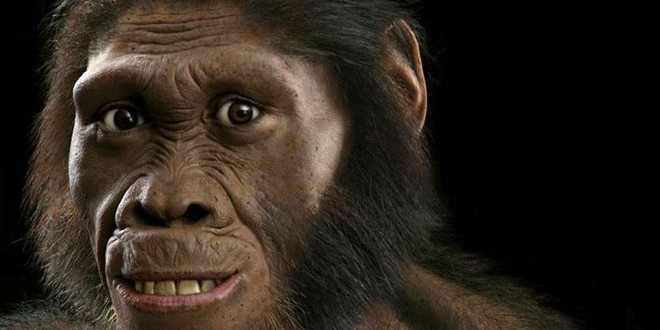The discovery of a new human ancestor could fundamentally change our understanding of how we evolved.
The creature, named Homo Naledi, is described as having a surprising mix of human and primitive characteristics.
The being may be an early member of the evolutionary group including humans and our closest extinct relatives, but it is not thought to be a direct ancestor of current-day humans.
Professor Lee Berger, of South Africa’s Wits University, who led the team that made the discovery, said: “What we have is a tall hominid, between 1.45 and 1.5 metres tall, was very skinny, had powerful joint muscles and had a brain about the size of my fist.”
The remains of Homo Naledi were discovered in the Cradle of Humankind, about 40 kilometres (24 miles) west of Johannesburg, in a chamber some 90 metres from the cave entrance, accessible only through a chute so narrow that a special team of very slender people was used to retrieve them.
The discovery is the single largest fossil hominin find made on the African continent and it is expected to shake up the evolutionary tree, as the species could have displayed behaviour that has only been seen in humans and Neanderthals.
For example, the species appears to have deliberately placed the bodies of its dead in the remote cave, the type of behaviour previously thought to be limited to humans.
This has excited researchers, who believe there may be hundreds or even thousands more fossilised remains waiting to be unearthed in the cave.
Scientists involved in the research say the 1,550 fossils come from at least 15 individuals, but their age is unknown and that makes it hard to know how important the discovery is.
Eric Delson, of Lehman College in New York, who was not involved with the work, said his guess is that Homo Naledi is from a group of early Homo creatures from around two million years ago, but other experts, such as Tim White, from University of California, Berkeley, said the fossils belonged to a “primitive Homo Erectus, a species named in the 1800s”.
Bernard Wood, of George Washington University, described the situation as being “like a Sherlock Holmes mystery”.
Agencies/Canadajournal
 Canada Journal – News of the World Articles and videos to bring you the biggest Canadian news stories from across the country every day
Canada Journal – News of the World Articles and videos to bring you the biggest Canadian news stories from across the country every day



